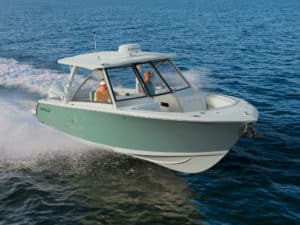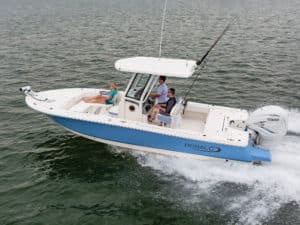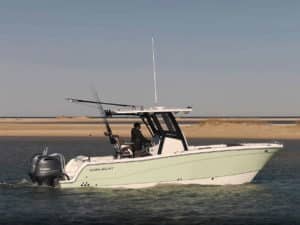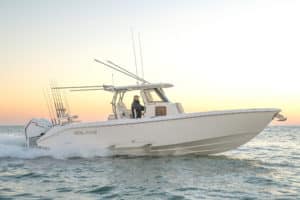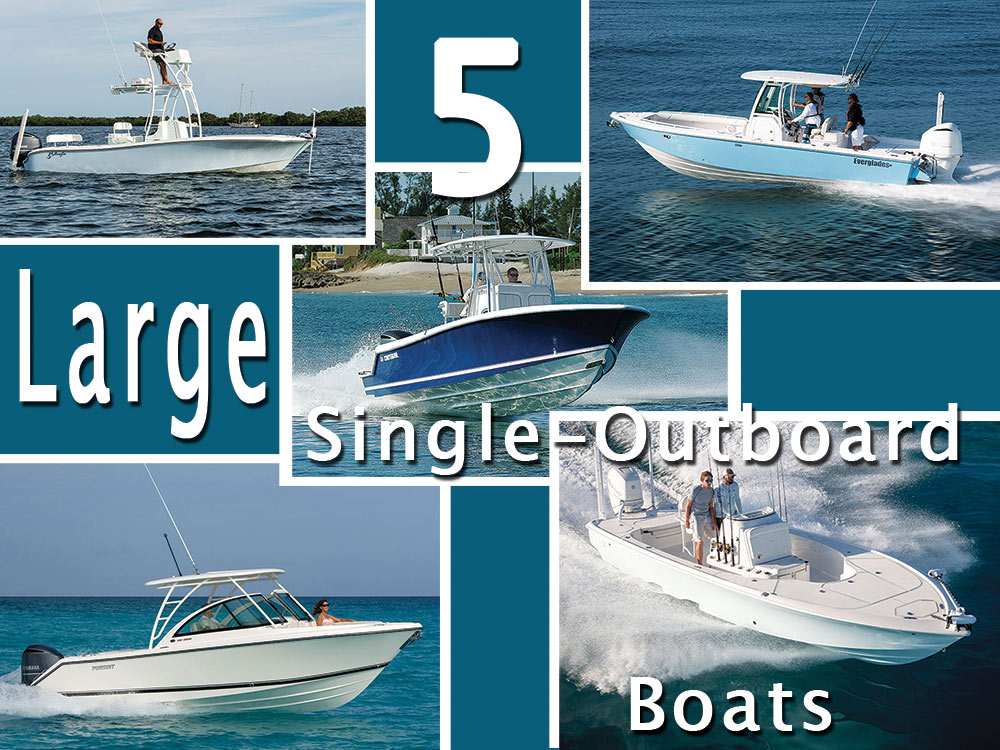
Outboard engines now ratchet up to more than 600 hp — more than enough oomph to propel a fairly large center console. However, it appears that anglers still prefer to double up with twin engines on boats larger than 25 or 26 feet.
We wanted to know if that trend might be changing in the future, though, so we asked five boatbuilders to talk about the power‑versus-LOA curve and name their largest single-engine model. They also told us why building bigger boats for single outboards likely wouldn’t be optimal. Boats are listed alphabetically.
Contender 28S
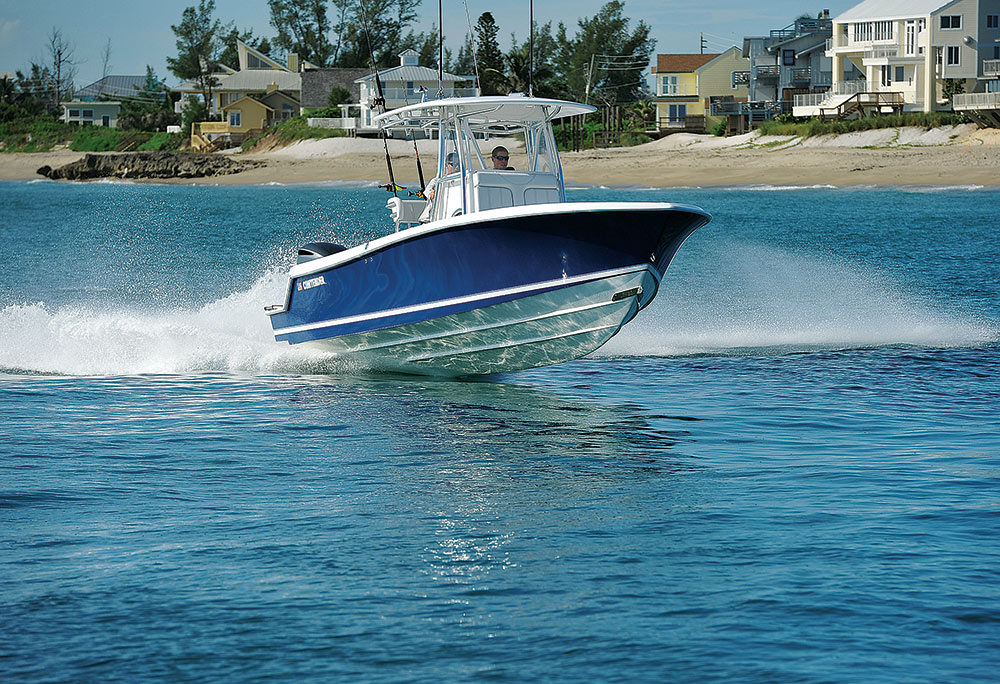
The 26-foot LOA seems to be a cutoff for single-engine power because “customers always want more speed and more reliability,” says Jordan DeLong, Contender’s director of sales and marketing. “It used to be cruising at 30 knots was fast. Now it’s 50-plus. The 28, although available with a single 350, is most popular with twin 300s — which is a huge disparity in performance.”
One of the most important concerns when designing a larger single-outboard boat involves prop torque making the boat lean while underway, DeLong says. “Although you can remedy that with trim tabs, we at Contender have placed the livewell on the port side to combat this issue and help naturally balance the boat.”
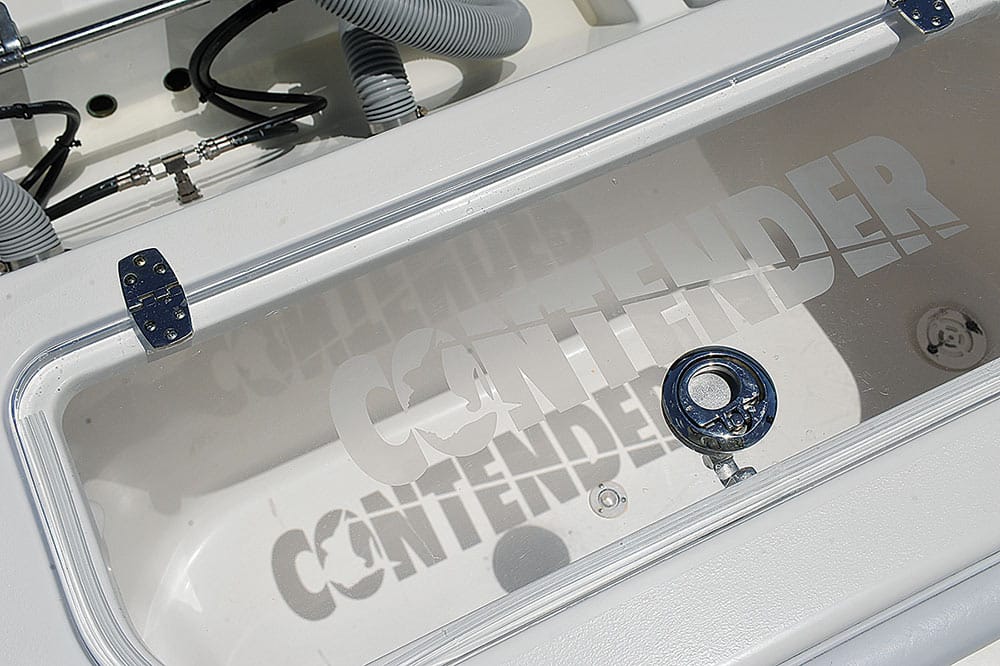
Everglades 273CC
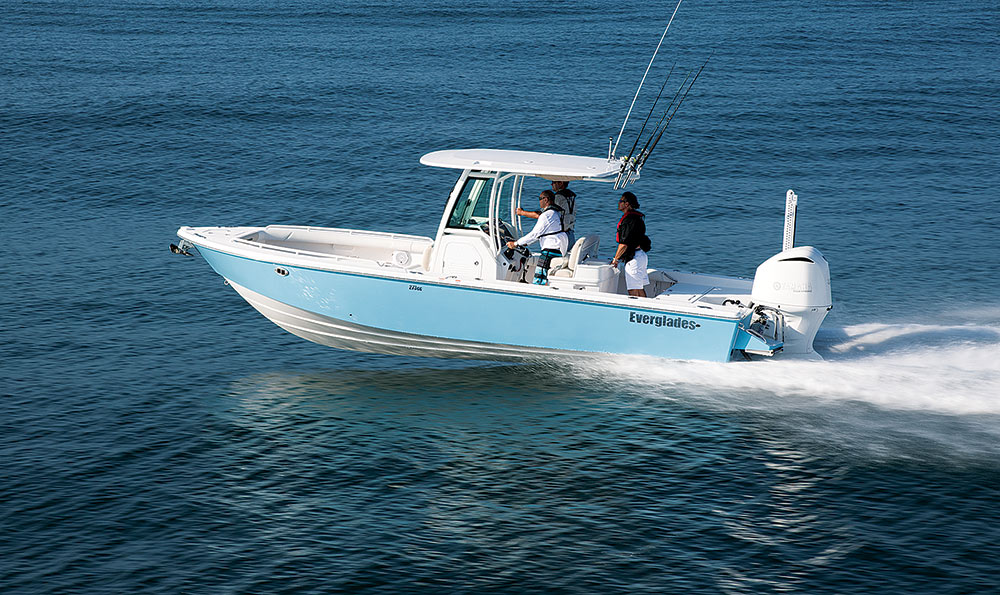
The Everglades 273cc represents a hybrid inshore/offshore design, meaning it can run offshore on a decent day but also fish like a bay boat nearshore. That dual purpose allows it to function respectably with a single outboard or twins.
“The largest boats on my list are between 25 and 27-plus feet in length,” says Shane Kwaterski, Everglades director of dealer development. “Once you go above 27 feet, people are more likely to be taking longer runs. They want the redundancy of multiple engines. The single-engine platform on a 27-foot boat gives you big-boat feel when the majority of your cruising might be closer to home.”
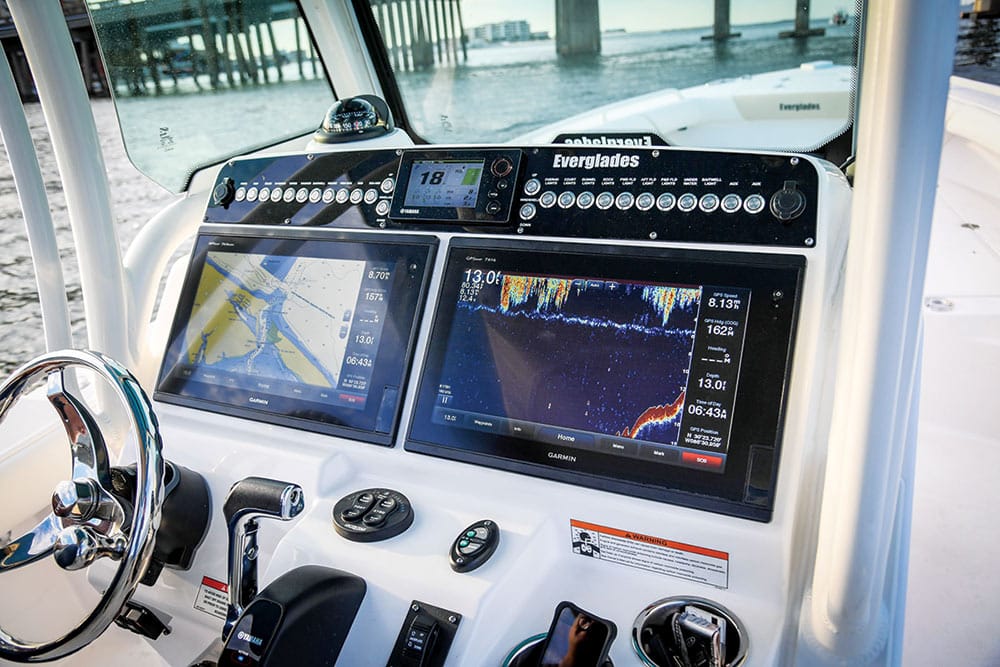
When creating a large single-outboard boat, builders must balance planing and displacement to ensure the boat has enough power to climb onto plane with a single engine and enough displacement for a comfortable ride. That can become a tricky design-and-weight-distribution formula.
Thankfully, Everglades built the smaller and hugely popular 243cc before moving up to its 27-footer. But will the company tackle an even larger single-engine project? “As technology continues to improve and products become more dependable, there will definitely be larger single-engine boats,” Kwaterski says. “You want to use technology to your benefit and to advance the boating industry, so why not?”
Pursuit DC 265
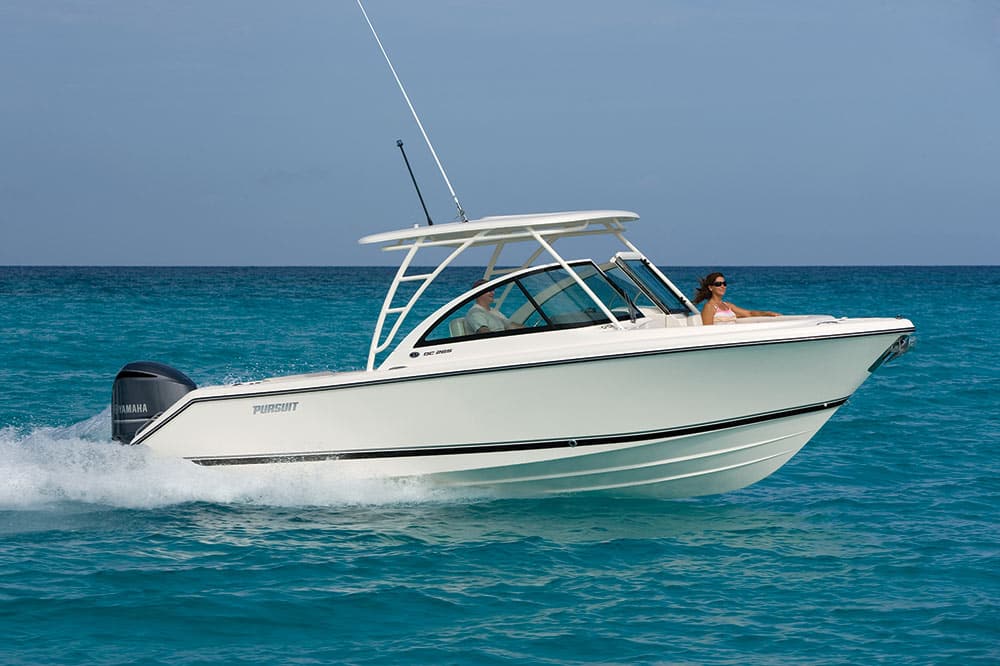
“Even though there are high-horsepower engines in the 600 hp range, weight-to-performance and engineering constraints make them unreasonable for boats much over 27 feet,” says David Glenn, Pursuit marketing director. “Single-engine outboards have a limit with length, in my opinion.”
For Pursuit, that limit is currently the 25-foot-10-inch DC 265, a dual-console fishing boat that can handle up to 400 hp.
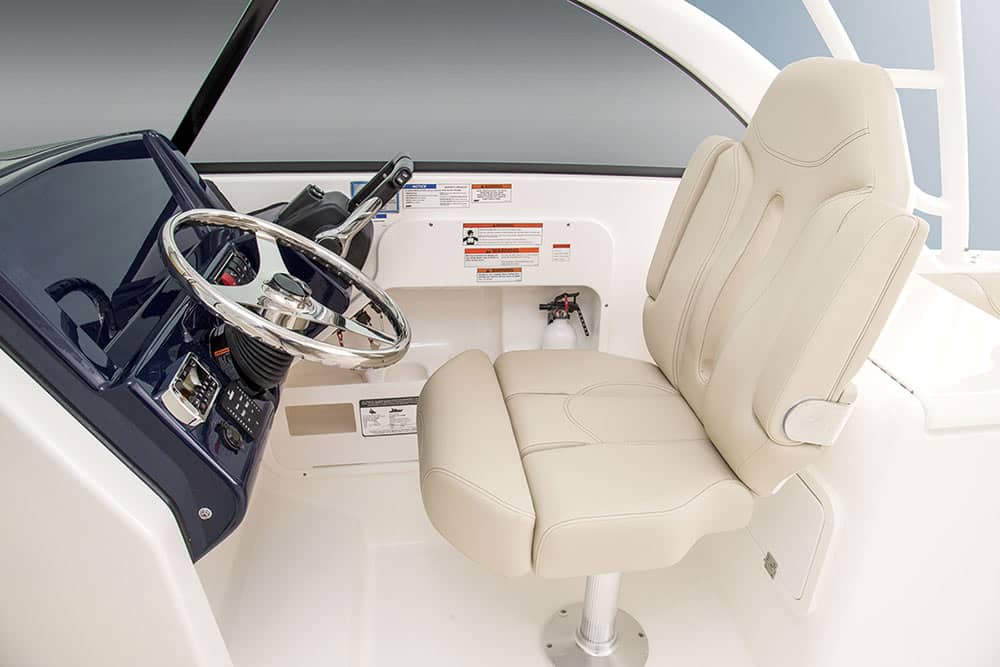
Pursuit builds its transoms specifically for single-, double- or triple-engine installations, Glenn says. “Our engineering team builds laminate schedules and other support systems into the hull, transom and stringers that support certain propulsion at all levels. And Pursuit is one of a very few manufacturers that has a patent on that build.”
Historically, Glenn says, single-powered-vessel owners often added kicker engines to enhance their boat’s safety. Redundancy counts in offshore fishing, and that’s often the determining factor when buyers consider single versus twin power and overall vessel size.
SeaVee 270Z
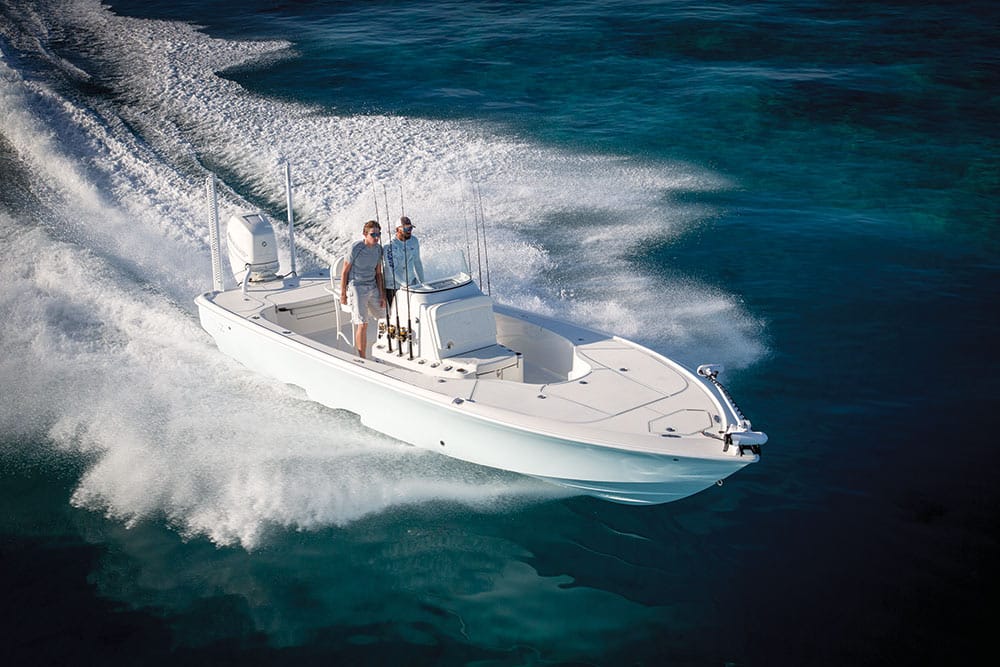
“The biggest impediment to big boats running with singles is getting on plane,” says John Caballero, SeaVee marketing director. “Unfortunately, internal-combustion engines don’t produce lots of torque until they are turning at relatively high rpm. The time it takes for an engine to turn up to its max torque is directly added to the time it takes to plane.”
With fixed torque and power, he says, engineers can calculate a maximum amount of drag that must be overcome by a single engine. That drag requirement corresponds to a boat of about 27 feet and 8,000 pounds.
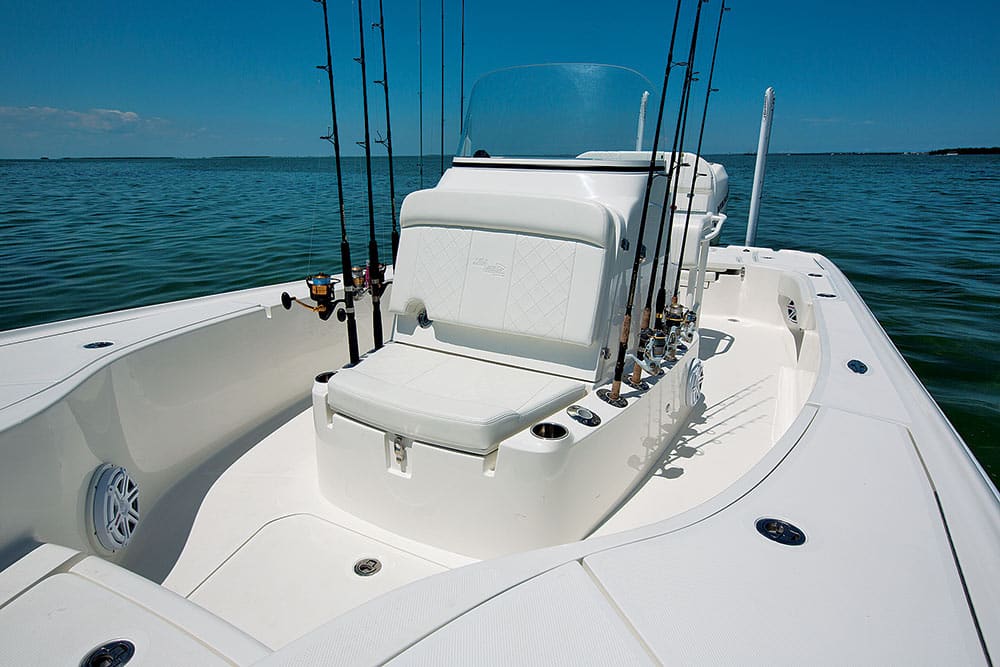
Simply put, with multiple engines, each engine carries much less load, so they can reach max torque sooner.
At that straddling line of 27 feet, SeaVee does all it can to reduce the total weight of the boat with resin infusion and other advanced composite-fabrication methods. “We also reduce the deadrise at the transom somewhat to reduce resistance, as well as design the center of gravity to be more forward to reduce hump trim angles,” Caballero says.
The SeaVee 270Z, which the company labels a bay boat, can be powered by a single or twin outboards. “When we offer twins, we have a redesigned fuel system to provide for greater fuel capacity and also to locate the fuel load-center more forward,” he says. “It takes a great deal of computational effort and involves designing the boat twice, in many regards.”
Caballero says if engine makers can design outboards that produce very high torque very quickly — through the use of electric-drive motors, variable gear ratios, variable-pitch props or high-compression blowers — “that’s when we will see bigger boats with singles.”
Yellowfin 26 Hybrid
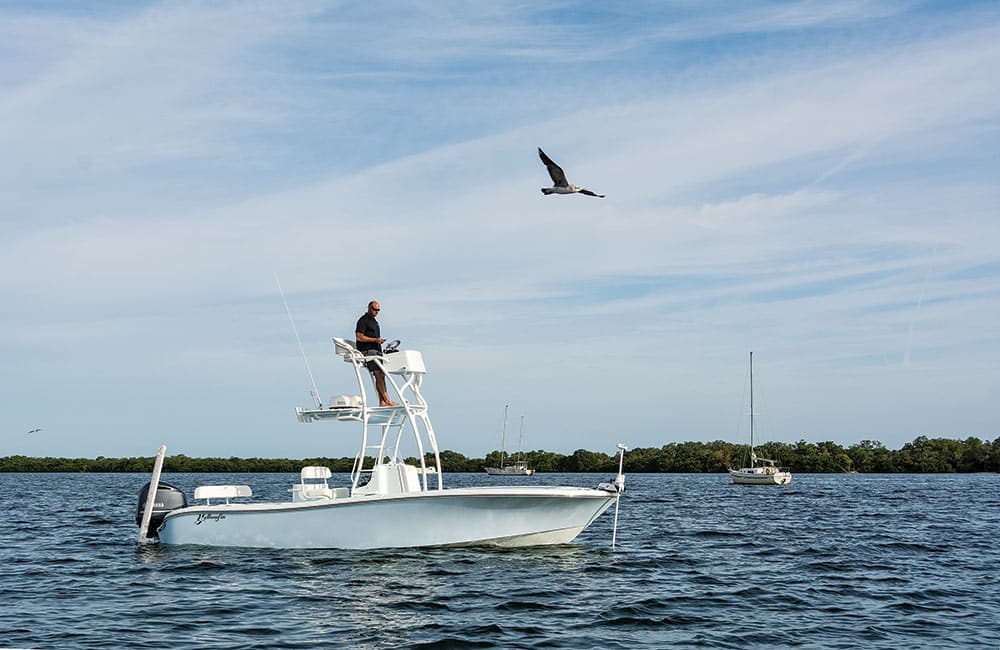
One main factor in designing a larger single-outboard boat is how the vessel carries weight such as fuel, ice, people and gear, says Heath Daughtry, vice president of Yellowfin. “Where does the center of gravity fall, and is the boat designed for multiuse function?
“For the nearshore or bay fisherman, the boat can be equipped with a single motor,” he says. “The angler has the ability to carry an abundant amount of weight and still achieve a highly acceptable mpg return at cruise and an acceptable wide-open-throttle speed without any deficiency in hull performance.”
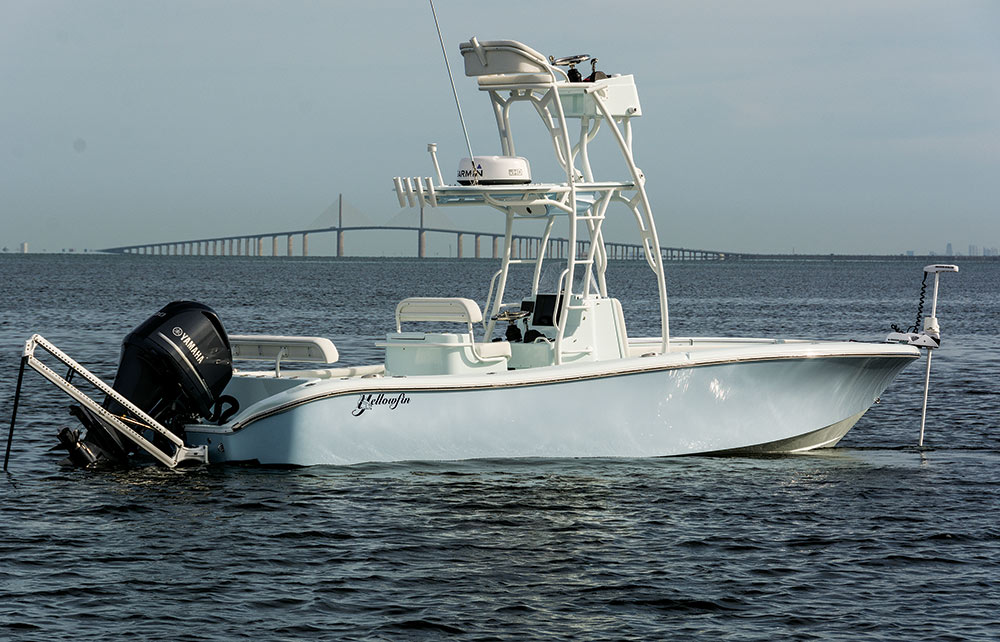
The 26 Hybrid operates with a single outboard in the 300 to 400 hp class. When powered by twins, Yellowfin restricts the max horsepower to 400 and limits the option to twin four-cylinder outboards. “The twin setup is primarily beneficial for the angler who plans to venture a little more offshore,” Daughtry says. “The safety and redundancy of two motors is largely the decision factor for this setup.”

